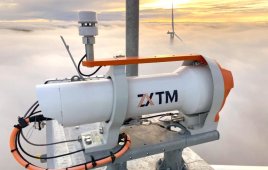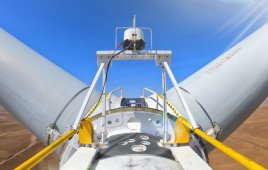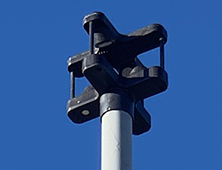Over the last two years, Karsten Jeppesen, Sales Manager at Denmark’s Leine&Linde, has noticed a sharp increase in sales of encoders to the wind-power sector. The country relies on wind turbines for most of its new power in an effort to reduce environmentally-harmful emissions. And to improve the efficiency of these big machines, many turbine operators there have turned to a rather small, 58-mm dia absolute encoder. Both incremental and absolute encoders are used to provide speed and positioning feedback. The units have become the most widely used in wind market.
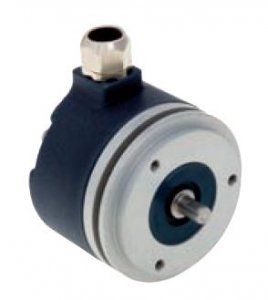
Siemens wind turbines use a Leine&Linde encoder on each blade and to monitor the direction in which the turbine is pointing.
Optimizing generator speed
Siemens wind turbines use a pulse encoder on each rotor blade and one to track where the turbine is pointing. The main control system uses position information to optimize generator speed relative to wind speed and direction. Thomas Holm Krogh, a development engineer at Siemens Wind Power, says his team chose Leine&Linde’s products after testing various encoders. “We chose Leine&Linde designs because of their high quality,” says Krogh. It is essential to use reliable components because wind turbines are sited in areas with large temperature fluctuations. In addition, many wind turbines are offshore, so their components must be reliable and durable, otherwise servicing and maintenance costs can spiral out of control.

Thomas Holm Krogh, Development Engineer, Siemens Wind Power
Thomas adds that the relationship with Leine&Linde is working well. “We set great store by the rapid technical support we have received. Their engineers have helped us a great deal with technical details. The fact that Leine&Linde has taken initiative is something we see as a huge plus.”
Future developments
Siemens Wind Power is at the forefront when it comes to developing advanced technology in fields such as aerodynamics and noise reduction. When Krogh looks to the future, he sees wind farms that are larger than existing ones. His customers view wind farms as power stations and a more are being sited offshore.
Encoders are also changing. One development is towards more advanced communication interfaces for control and monitoring. ProfiNet, for example, is being evaluated because it is expected to become an important protocol in future encoder designs. The reason is to improve performance, standardize communication, and use diagnostic functions to increase operational reliability and minimize maintenance costs. Lastly, generator design trends are moving towards use of permanent magnets because such units would allow designing wind turbines without gearboxes.
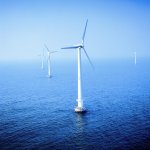
Vindeby wind farm, constructed in 1991, is the world's first offshore project.
A brief profile of Siemens Wind Power

Filed Under: Sensors

